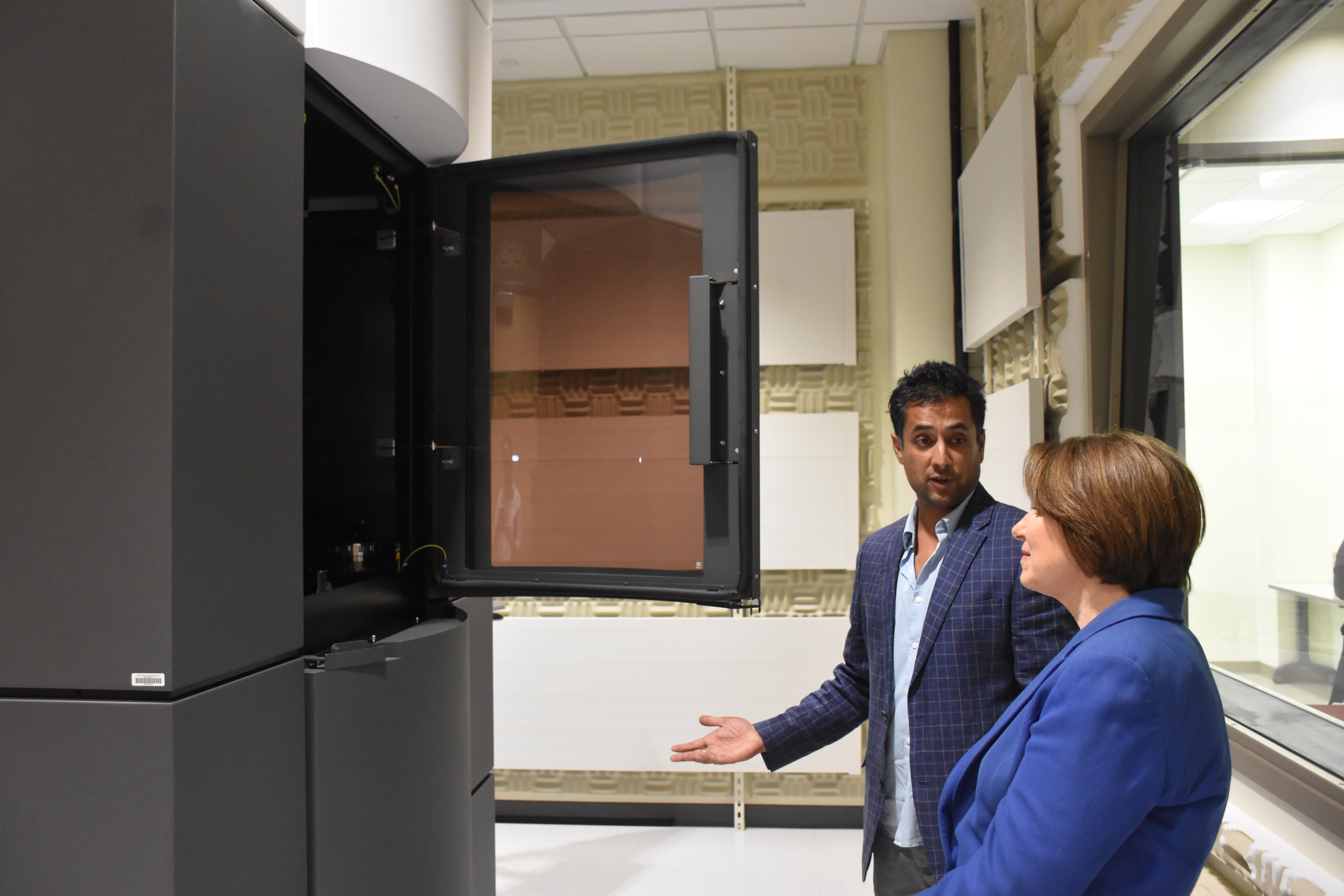Austin reacts to Vikes’ big win
Published 9:43 am Friday, May 11, 2012

An artist’s rendition of the inside of the proposed new Minnesota Vikings stadium. -- Photo provided
Sparks, Murray, Poppe all vote for stadium bill; Dayton expected to sign it
The long-debated Vikings stadium is nearly a reality.
The stadium bill, which passed out of conference committee Wednesday night, was approved by the House Thursday on a 71-60 vote and the Senate by a 36-30 margin. The bill is now en route to Gov. Mark Dayton for his signature.
Austin area DFL legislators Rep. Jeanne Poppe and Sen. Dan Sparks both voted in favor of the bill. Rep. Rich Murray, R-Albert Lea, also voted yes.
Local Vikings fans were enthusiastic over the decision. Katie Lowe, of Austin, said the time was ripe for the Vikings to have a new stadium.
“Other teams have gotten new places to play,” Lowe said. “The only ones left were the Vikings.”
She said she plans to go to games at the new stadium once it opens.
“Now everyone can be happy and we don’t have to hear about it anymore,” Lowe added.
Scott Trimble, another local Vikings fan, was excited to see the bill pass.
“I support it 100 percent,” he said. “I think the Vikings are good for the state of Minnesota.”
Trimble said he has been a fan since he was young, and will go to games at the new stadium. He has had season tickets for the Vikings for the last 10 years.
“Leadership is not a popularity contest,” Senate Minority Leader Tom Bakk of Cook told his colleagues just before they gave final approval to a Minnesota Vikings stadium bill.
And while he praised two Senate GOP leaders on the issue, he said it was DFLers who pushed the long-debated and controversial measure across the goal line.
If Democrats had not stood up to lead on the stadium and bonding bills, Bakk said Republicans, who have legislative majorities, would have presided over the “biggest do-nothing session in state history. Democrats will put up the majority votes for this and the bonding bill.”
Sen. David Tomassoni, DFL-Chisholm, agreed.
“The Democrats took control and would not let it fail. There was a mandate to get this done,” he said in a telephone interview Thursday evening.
Bakk praised Republican Sen. Julie Rosen of Fairmont, who authored and carried the stadium bill, and Senate Majority Leader David Senjem who lent his support to it. But he was not shy in his overall criticism of the GOP for not delivering a majority of their majority for the two measures.
“The House Democrats had to carry in the minority this bill. A new Republican majority (in both chambers) for the first time in 38 years is acting as a de facto majority,” he said.
Bakk then urged Republicans to put up a majority vote of their caucus. That, however, would not be the case. Senate DFLers did what their political party members in the House had done early morning Thursday — they provided the votes for its passage.
In the House, 38 DFLers and 33 Republicans voted “yes,” with 21 Democrats and 39 GOP members voting “no.” In the Senate, 21 DFLers and 15 Republicans voted “yes,” while eight Democrats and 22 Republicans voted “no.”
All Range legislators, with the exception of Rep. Carolyn McElfatrick of Deer River, voted for the stadium bill.
In a phone interview early Thursday evening, McElfatrick said she believes the stadium bill puts the state at future financial risk.
“I don’t think it was the best bill we could have gotten for Minnesota taxpayers. The funding stream is unproven and unreliable. There is too much hope put into electronic pulltabs and electronic bingo. But it’s not proven anywhere else,” she said.
And McElfatrick put financial projections to the gaming component of the bill to make her point.
“If I had gone out last Friday and spent $50 on pulltabs, I would have to spend $150 this Friday” to help meet the need to fund the stadium, she said. “You need to consider the accuracy of the estimates.”
The Deer River legislator said that while campaigning in 2008 (unsuccessfully) and 2010 (successfully) constituents were consistent in their opposition to any public funding for a new stadium. “But the last week and a half I started hearing from those who supported the bill.”
McElfatrick said she doesn’t know how the issue will play out in her campaign against Rep. Tom Anzelc, DFL-Balsam Township, who voted for the stadium. The two incumbents are paired in a new district due to redistricting.
Bakk, who touted the thousands of construction jobs that will build the new stadium, said on the Senate floor that it is “never easy to vote against what some of your constituents want. And Bakk said he had gotten an e-mail the night before from a constituent not pleased with his vote for the stadium.
“I wrote back saying I’m sorry you lost confidence in me. But Minnesotans are going to be proud” of the stadium,” he said.
Tomassoni said his e-mails were 1,000 to 1 for the stadium. “I didn’t even keep track after a while because there were so few against the stadium.”
Tomassoni relayed a humorous conversation with a constituent at Casey Drugs in Chisholm. “I had to call up home to get copies of some receipts for insurance. She said, ‘Well, are you going to vote for the Vikings stadium?’” he said with a hearty laugh. “This was about the connection of so many people with the Vikings. I had emails in support from all over the world.”
•••
Here’s a breakdown of the $975 million stadium plan that now has a funding mechanism in place and agreed to by both the Legislature and Vikings:
• 65,000 seats (expandable to 72,000), 1,500 suites, 7,500 club seats and space for administrative operations, retail, concessions and restaurants.
• 2,000 parking spaces within a block of the stadium connected by tunnel or skyway and 500 spaces within two blocks, with a dedicated walkway on game days.
• $477 million from the Vikings.
• $348 million from the state.
• $150 million from the city of Minneapolis.
• Must be made with American steel (a provision that was pushed by Iron Range lawmakers).
—The Associated Press contributed to this report.


